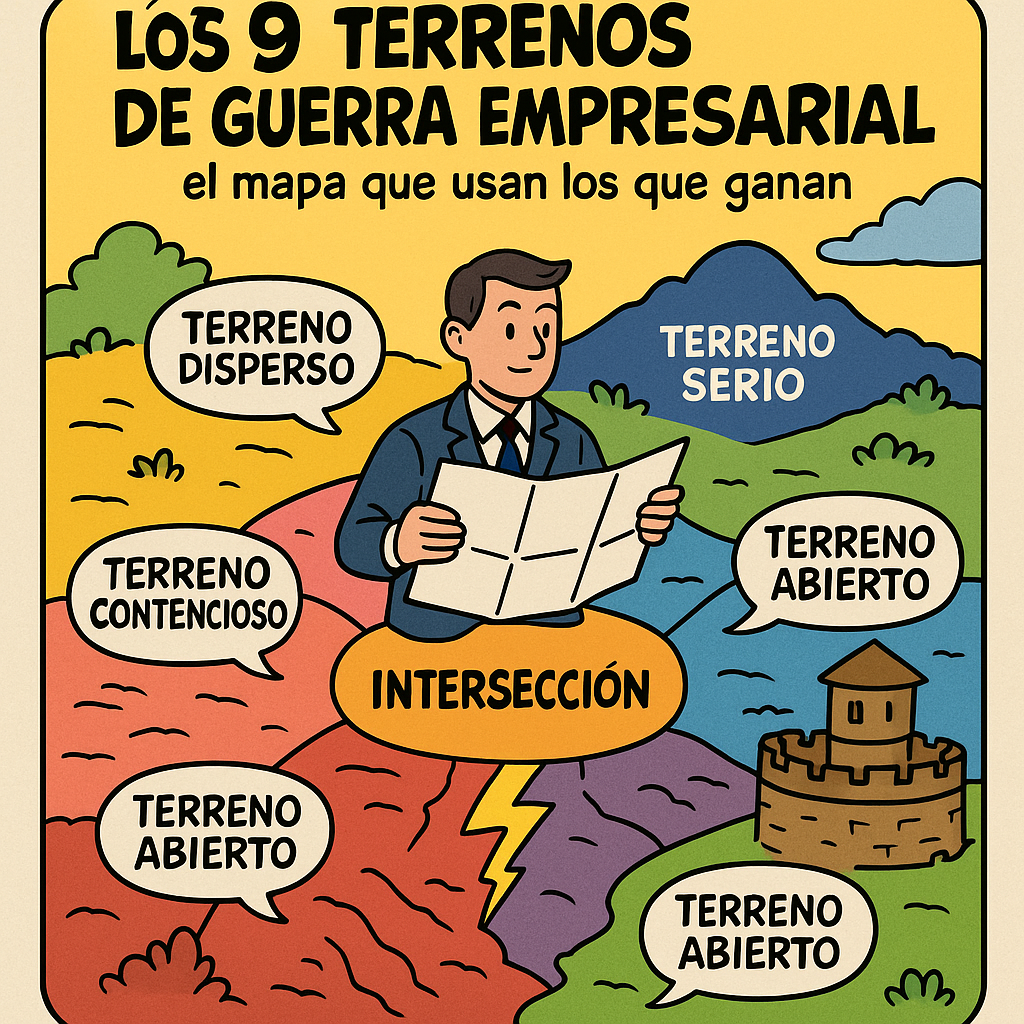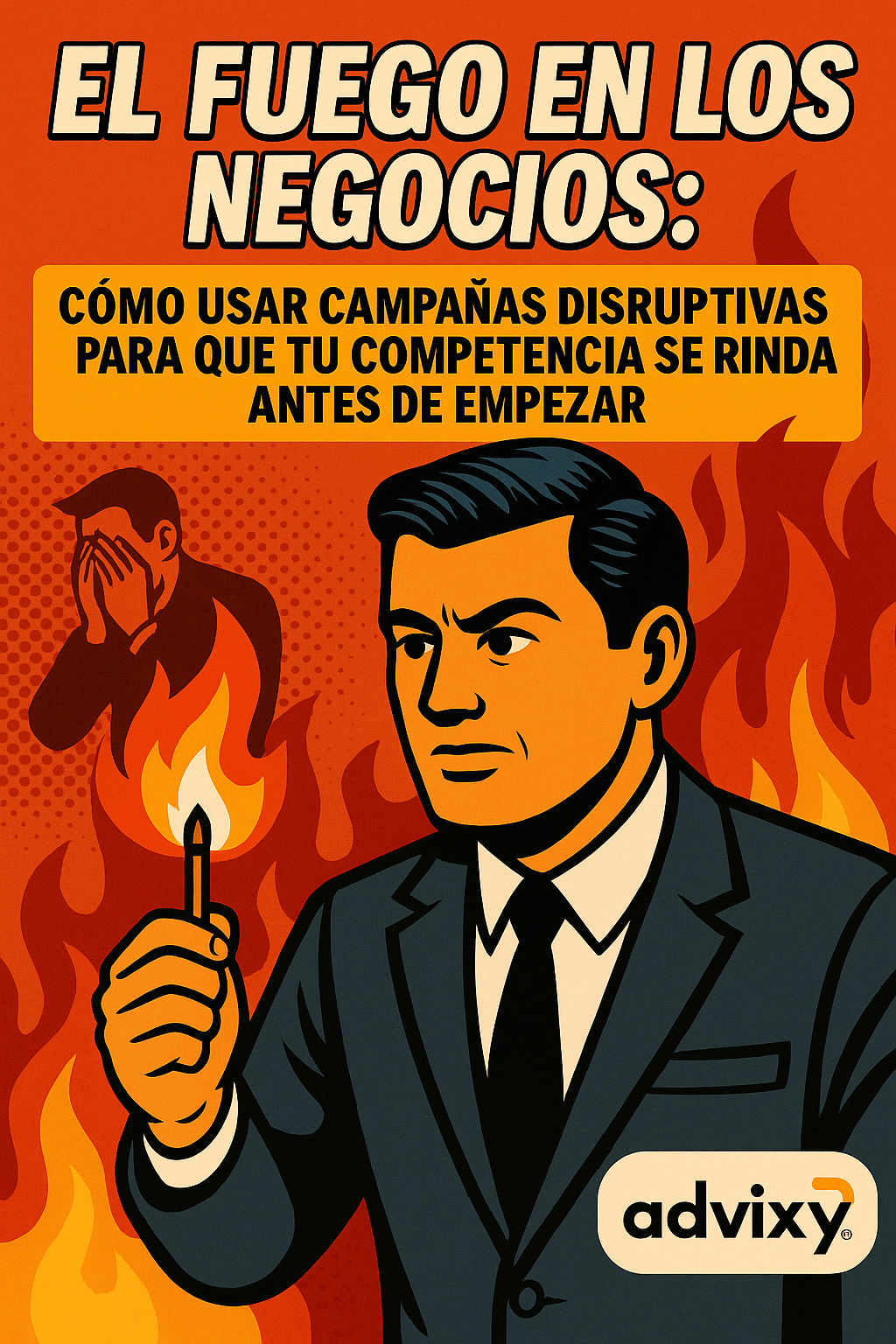“To know the terrain is to know victory.” – Sun Tzu
Sometimes it’s not the product. Nor is it the equipment. It’s the ground. You’re fighting the right fight… in the wrong field. There are markets that reward speed, others patience, others regulation and surgical precision. To confuse the ground is to lose by attrition: no epic, no noise and, worst of all, no learning.
This chapter of the Sun Tzu saga is not a list; it’s a flashlight. With it we illuminate nine soils that are still valid in 2025 and we tell you how to change the play depending on the soil you walk on. And here comes the important part: at Advixy we are not just a regular consultancy that gives you a nice report and a lot of luck. We are your 360º team: tax and legal, yes, but also strategy, operations, technology, marketing, internationalization and compliance. We get into the kitchen, and we go out with you to the market.
Imagine your customer doesn’t even know they have a problem. You push offers and they don’t convert. This is the scattered terrain: before selling, you have to create language and educate. A step further on is the light ground: the niche has just been born, there is almost no competition and no one has kept the name of the category. Here, speed with focus rules; arriving first is not about running, it’s about choosing what not to do. When the landscape is filled with clones and promotions, you enter into a dispute: each customer is a battle and margins are shaky. You don’t get out by lowering prices; you get out by truly differentiating and executing like clockwork. If, in addition, entering and copying is cheap, you are on open ground: the winner is the one who innovates in short cycles and builds soft moats -community, data, experience- that cannot be cloned with a copy-paste.
There are also unforgiving soils. In the serious arena, maturity rules; here, reputation is built on reliability, compliance and service, not on grand proclamations. In difficult terrain, the equation includes regulators, certifications, CAPEX and long cycles: to promise without a roadmap is to burn cash; what works are pilots with verifiable milestones and smart coalitions. And what happens when the giants keep the board? Fenced terrain: attacking head-on is epic… and expensive. What works is flanking with a wedge product in a forgotten sub-segment or complementing until you gain real leverage.
There are, fortunately, floors where the market can be designed: the intersection, that crossover between trends where categories are born. Tesla did not compete “in cars”; it competed in mobility × sustainability × software. While others fought in the usual contentious, they designed an ecosystem. Whoever designs the ecosystem, for a while, designs the rules. The opposite is the deadly terrain: a technological disruption or a regulatory shift comes along and, if you keep arguing about the dashboard, you’re out. Here, only concentrated decisions are worthwhile: pivot with courage, sell what is left over, buy what accelerates and speak to the team with an honesty that sometimes hurts.
This all sounds good, but… how do I know which floor? The answer usually lies ahead: does your client recognize your pain or do you have to put it into words? Is getting in cheap or does it hurt? Do you get copied within weeks? Does your proposal live at the intersection of two worlds? Is there an existential threat 6-12 months out? With five frank questions, the terrain is drawn. And if you hesitate, you’re probably mixing ground: it’s time to prioritize the one that impacts your bottom line the most over the next two quarters.
This is where Advixy becomes differential. We don’t just hand you a PDF and wish you luck. We come in, diagnose and execute with you. We start by reading your real terrain (not the one we would like), we fit your proposal on the map and we choose two plays -just two- that this terrain rewards. We set up the scorecard, we establish the responsible parties, we define discard rules and we go out into the street. In ninety days you go from “doing everything” to doing what you have to do. No smoke. No shortcuts. With boots, not PowerPoint.
If this reading has moved something inside you, it is because you already sense that the problem is not “working more”, but fighting where it belongs. The good news is that the ground can be read, and when you read it, everything changes: strategy ceases to be a fancy word and becomes traction, margin and peace of mind.
In the next chapter we will talk about the internal enemy: the one that sabotages before the competition fires. But don’t wait for the next installment if you already feel the terrain is taking its toll.
Let’s talk today.









